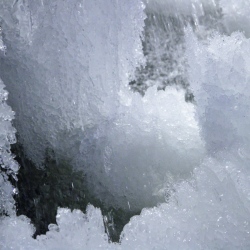
The steel penetrator was fired at a 10-tonne cube of ice to simulate the surface of Jupiter’s moon Europa. It hit the block at a speed of 340m/s and decelerated rapidly, but its structure remained intact, as did its interior components.
Researchers say the penetrator would be a robust and inexpensive way to land instruments on other worlds. These might be seismometers to study the interior of Mars, or a miniature organic chemistry laboratory to check for microbial activity on icy Jovian satellites.
Scientists envisage several penetrators being deployed at once, carrying perhaps a network of sensors to widely separated locations in the sub-surface.
Being able to get just a few metres down is key, because if life exists anywhere else in the Solar System, it is likely to be buried away from harsh space radiation.
